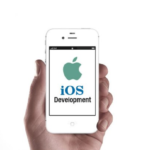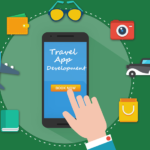
This blog shares the step-by-step guide to iOS application development right from discovery, concept to app testing and launch. Let’s go through each one of them in detail for a thorough insight.
Discovery
Research and discovery phase is the initial phase in the iOS application development process. Before starting, developers need to nail down business objectives and have a clear idea of the problems that might come their way. This is the only phase where you need to identify audiences and do a firm market research to plan out strategies well.
Conceptualizing
In the concept phase, developers need to frame a groundwork for their app. This process starts right after app objectives are defined. In this phase, the developer needs to refine their app idea and plan out the features. This will help them determine the requirements of the application.
An experienced iOS app developer who has expertise in coding will bring the entire app features to life.
Wireframing
After validating app idea, developers need to detail their design into a document or paper. A wireframing tool is generally recommended for the same. Wireframes define a user experience roadmap and acts as information architecture blueprint.
The flow of how the user will navigate the app needs to be detailed to a larger extent in the wireframe. This will help you understand the user’s expectations and design a layout that help them browse the app easily and quickly.
The user flow planned must be devoid of non core features. It is important to offer only the core app idea. This will reduce the initial development costs and also help expand the market in a quick way.
Keeping design as the priority
Design is all about providing an intuitive experience not about how an app will look. Design is the only parameter that makes technology useful. So, a developer needs to incorporate design into the app to make its user experience unmatched.
Architecture and planning
Remember, the more scalable an application is, the more useful it counts to be. Architecting an app is extremely useful because it could prevent you to completely rewrite the same in the future. For doing the same, developers need to create an organized plan, both on the frontend and backend.
Integrating analytics
By tracking the number of downloads, user engagement and retention of your mobile app, you can easily plan the final process. This will help you improve enhancements and user experience.
Acquire feedback
After the app goes live on the store, customer’s usage behavior will offer you an insight on the app performance. User feedback is important to keep an eye on constant changes.
Conclusion:
Developing an app is a constant process, however, to make it effective, developers need to take care of maintenance, bug fixing and other updates. By following the steps given above, you can easily take care of functional and error-free iOS application development that is in sync with the latest trends.





































